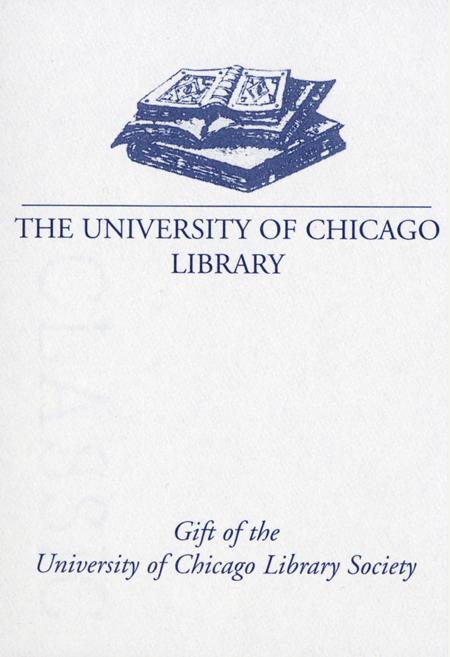Review by Choice Review
The new Oxford Dictionary of the Middle Ages (ODMA) in four volumes (and available online), edited by Bjork (English, Univ. of Arizona), falls between one-volume works and the massive Dictionary of the Middle Ages (1982-89), edited by J. R. Strayer et al. (see, e.g., v. 12, CH, Feb'89, 26-3034). It resembles recent two-volume efforts such as the Encyclopedia of the Middle Ages, edited by A. Vauchez (CH, Jun'01, 38-5347; also online). ODMA has over 800 contributors and 5,000-plus entries ranging from Amalarius of Metz to 30 pages on women. It contains articles with no parallel in the two-volume work edited by Vauchez, but the reverse is true as well. Vauchez covers religious topics more thoroughly, but architecture is treated more fully by ODMA, which also claims to be more thorough on eastern Europe and the Middle East. The brief bibliographies include recent works.One can find faults, of course. The headwords can most charitably be described as eccentric. An article titled "Supernatural Beliefs in the Scandinavian World" is included, but no articles relating to other regions. Scotland, Ireland, and Wales are treated as one group with individual articles for each country under a common heading. One imagines that the inhabitants of these countries would not be happy to see that they are treated as appendages to England. A number of headwords are phrases, many of which are inverted, e.g., "Women, learned Jewish." This probably would not be problematic in the online version but is awkward for users of the print volumes. ODMA, however, is a useful work both for nonspecialists and for specialists who want quick identifications. It will be valuable for comprehensive collections or those lacking a recent multivolume reference work on the Middle Ages. Summing Up: Recommended. Lower-division undergraduates through researchers/faculty; general readers. L. S. Creider New Mexico State University Library
Copyright American Library Association, used with permission.
Review by Booklist Review
*Starred Review* Scribner's 13-volume Dictionary of the Middle Ages (DMA) (1982-1989; Supplement 1, 2004) retains its position as the premier reference work on the medieval period. An equivalent concise, affordable resource did not exist until publication of The Oxford Dictionary of the Middle Ages (ODMA). The ODMA is the work of an extraordinary assembly of scholars. Editor Bjork is director of the Arizona Center for Medieval and Renaissance Studies. Contributors represent prestigious universities worldwide, from the University of Sydney to the Institute of Icelandic Studies. Summaries of contributors' research on, for example, Anglo-Saxon understandings of dreams and penitent prostitutes function as invitations to explore the set. The ODMA's 5,000 entries range in length from one or two sentences (Gargoyle, Drollery) to 10,000 or more words and are consistently well written. Like Supplement 1 to the DMA, the ODMA encompasses areas of Asia, Africa, and the Middle East as well as topics of current scholarship, such as gender studies and Islam. Entries include individuals (Attila, Hildegard of Bingen); technical terms (Hammer beam, squinch); and places (Sutton Hoo). Each entry includes at least one bibliographic citation; longer entries list dozens of primary sources, valuable classic works, and recent scholarship. More than 500 illustrations include black-and-white photographs, diagrams, illustrations, and maps. Images of manuscripts are especially welcome, such as those accompanying Herbs and herbals and Surgeons and surgery. Maps are both political and thematic (for example, The Spread of the Black Death Plague ). The ODMA provides three access tools: the A-Z arrangement of the entries themselves, a thematic index, and a general index. The thematic index lists articles within the categories of Country and Place Names, Culture, Historical Context and Inquiry, and Society. Although this provides a good conceptual overview of the set, it is difficult to identify a specific article unless one can figure out the appropriate category. The general index includes individuals, events, and some' subject coverage. It omits many major entries with the brief explanation that readers should consult entries in the set first. Readers who miss the explanation may wonder why there is nothing on alchemy, witchcraft, or women all lengthy entries within the set. The ODMA is the best concise medieval encyclopedia currently available, highly recommended for academic and large public libraries. It is also available online as part of the Oxford Digital Reference Shelf.--Whittington, Christine Copyright 2010 Booklist
From Booklist, Copyright (c) American Library Association. Used with permission.
Review by Library Journal Review
For the last 12 years, Bjork (Foundation Professor of English & director, Arizona Ctr. for Medieval & Renaissance Studies, Arizona State Univ.) has led an impressive team to create this comprehensive four-volume interdisciplinary dictionary covering medieval Europe between 500 C.E. and 1500 C.E. This set is the product of a distinguished advisory and editorial board and 800 international scholars, many widely recognized as experts in their fields. The project achieved its aim of rebalancing the headword lists so topics such as women, children, Jews, and Muslims are given more treatment. Technology, medicine, and archaeology are also well represented, and there is broad coverage of languages and literatures from throughout the region. The geographical terms list also includes increased attention to the Low Countries, Spain, the Byzantine Empire, and the Islamic world. With 5000 entries-ranging from a paragraph to thousands of words in length, all signed, cross-referenced, and including short, up-to-date bibliographies-this will be an important resource for students and scholars alike. The over 500 images and 40 maps are thoughtfully employed; the detailed general index and thematic list of entries will prove useful. BOTTOM LINE Clearly written scholarly entries and a carefully balanced choice of topics make this work essential for academic libraries supporting medieval studies programs and highly recommended for large public libraries.-Larry Milliken, Drexel Univ., Philadelphia (c) Copyright 2010. Library Journals LLC, a wholly owned subsidiary of Media Source, Inc. No redistribution permitted.
(c) Copyright Library Journals LLC, a wholly owned subsidiary of Media Source, Inc. No redistribution permitted.
Review by Choice Review
Review by Booklist Review
Review by Library Journal Review

